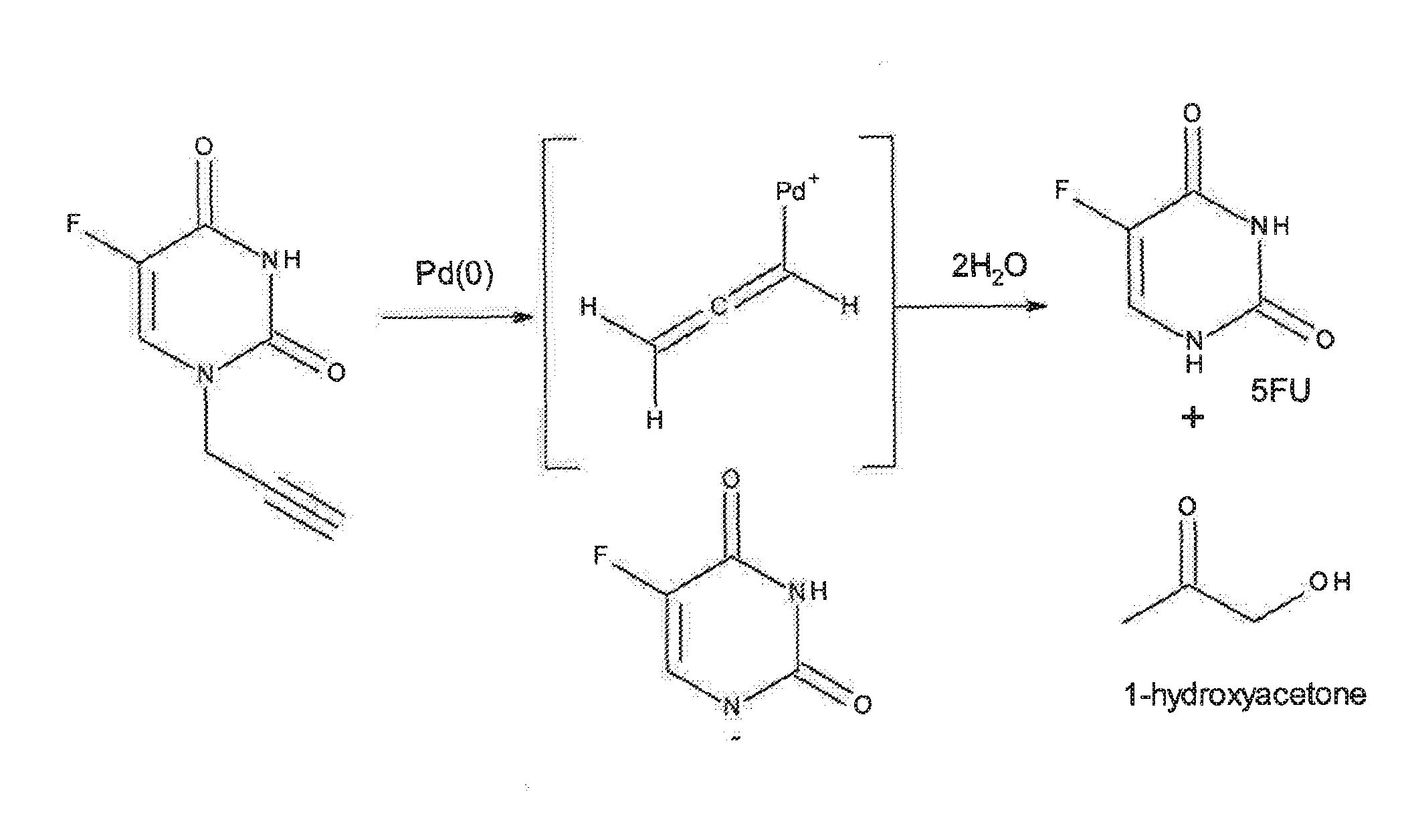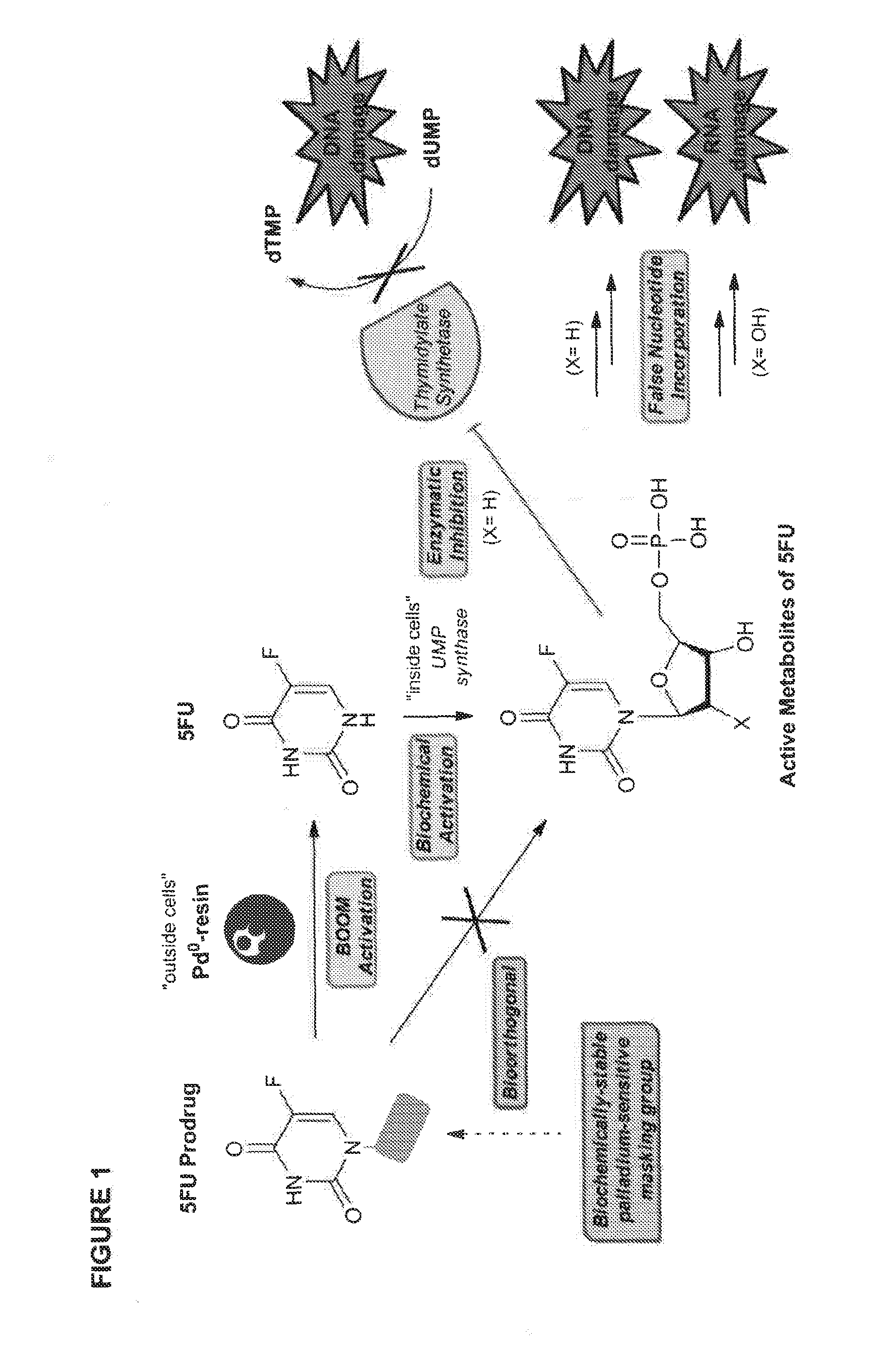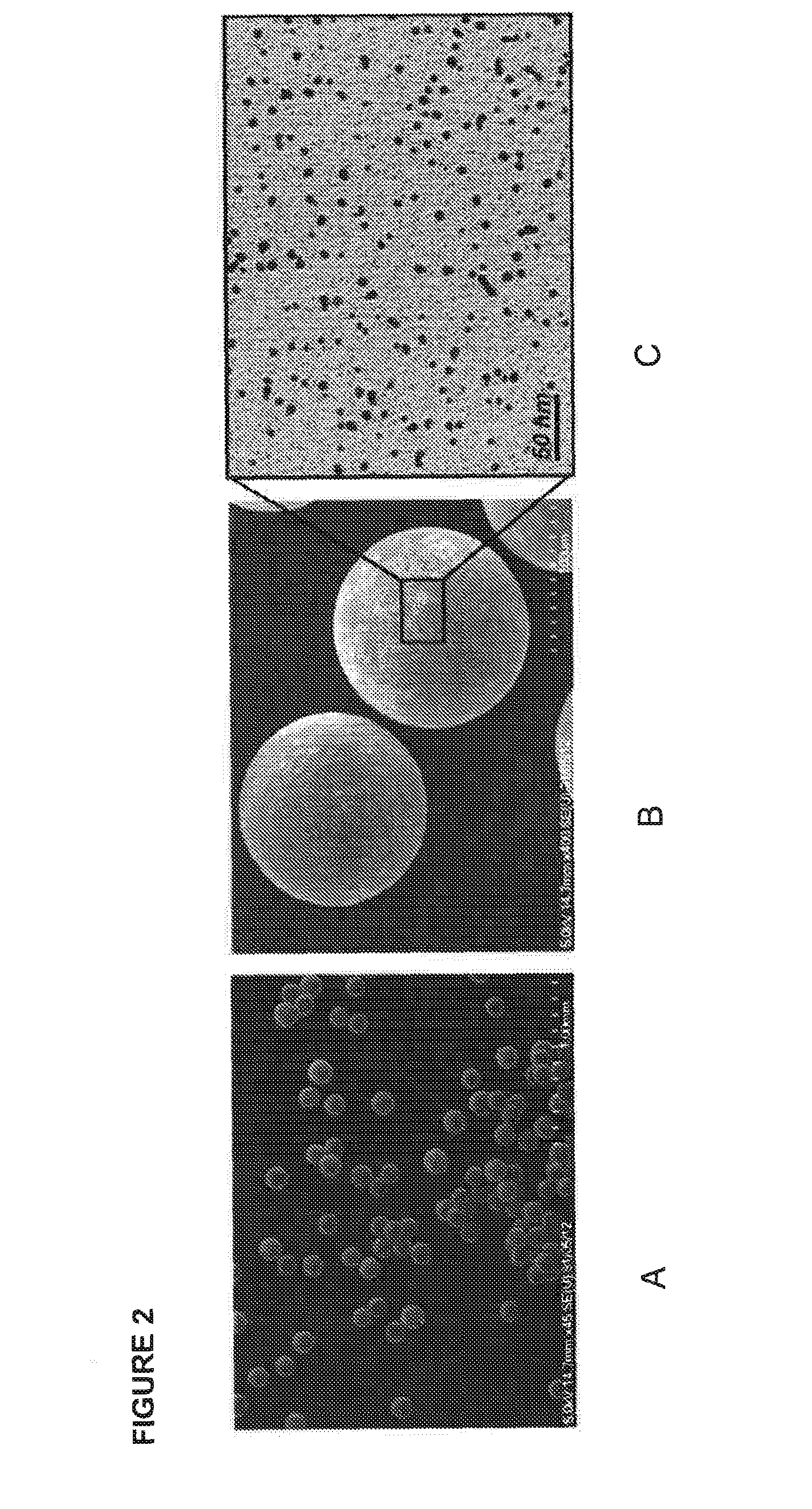Bioorthogonal methods and compounds
a bioorthogonal and compound technology, applied in the field of new bioorthogonal deprotection methods, can solve the problems of undesirable side effects and limited success in the application of such reactions in the biological environment, and achieve the effect of general synthetic utility and easy cleavag
- Summary
- Abstract
- Description
- Claims
- Application Information
AI Technical Summary
Benefits of technology
Problems solved by technology
Method used
Image
Examples
example 1
Pro-5FU
[0432]
[0433]The synthetic method described above using propargyl bromide gave a colourless solid, 104 mg (40% yield); Rf 0.35 (6% MeOH in DCM); 1H NMR (500 MHz, DMSO) δ 11.91 (br s, 1H, NH), 8.13 (d, J=5, 1H, ArH), 4.46 (d, J=2.5, 2H, N—CH2—C), 3.44 (t, J=2.5, 1H, C—CH); 13C NMR (126 MHz, DMSO) δ 157.35 (d, JC—F=25.9, C), 149.11 (C), 139.80 (d, JC—F=230.4, C), 128.95 (d, JC—F=33.9, CH), 78.40 (C), 76.15 (CH), 37.00 (CH2); MS (ESI) m / z 167.2 [M−H]−; HRMS (FAB) m / z calc. for C7H5O2N2F [M+H]+: 168.0332, found: 168.0330.
reference example 1
All-5FU
[0434]
[0435]The synthetic method described above using allyl bromide gave a colourless solid, 80 mg (31% yield); Rf=0.5 (6% MeOH in DCM); 1H NMR (500 MHz, DMSO) δ 11.80 (br s, 1H. NH), 8.01 (d, J=6.7, 1H, ArH), 5.88 (ddt, J=17.0, 10.5, 5.3, 1H, N—CH2—CH), 5.19 (m, 2H, CH2—CH═CH2), 4.24 (d, J=5.3, 2H, N—CH2—CH); 13C NMR (126 MHz, DMSO) δ 157.45 (d, JC—F=25.7, C), 149.46 (C), 139.68 (d, JC—F=229.3, C), 132.63 (CH), 129.79 (d, JC—F=33.2, CH), 117.64 (CH2), 49.34 (CH2); MS (ESI) m / z 169.2 [M−H]−; HRMS (FAB) m / z calc. for C7H7O2N2F [M+H]+: 170.0486, found: 170.0489.
reference example 2
Bn-5FU
[0436]
[0437]The synthetic method described above using benzyl bromide gave a pale yellow solid, 133 mg (38% yield); Rf 0.44 (6% MeOH in DCM); 1H NMR (500 MHz, DMSO) δ 11.86 (br s, 1H, NH), 8.22 (d, J=6.7, 1H, ArH), 7.39-7.28 (m, 5H, ArH), 4.83 (s, 2H, N—CH2-Ph); 13C NMR (126 MHz, DMSO) δ 157.42 (d, JC—F=25.6, C), 149.68 (C), 139.62 (d, JC—F=227.9, C), 136.52 (C), 130.08 (d, JC—F=33.4, CH), 128.67 (CH), 127.75 (CH), 127.49 (CH), 50.63 (CH2); MS (ESI) m / z 219.2 [M−H]−: HRMS (FAB) m / z calc. for C11H9O2N2F [M+H]+: 220.0643, found: 220.0643.
[0438]Synthesis of N1-Functionalized 5FU Derivatives 3b-e
[0439]5-Fluoruouracil (100 mg, 0.77 mmol) and DBU (115 μl, 0.77 mmol) were dissolved in acetonitrile (2 ml), and the mixture was cooled down to 4° C. in an ice bath. The corresponding alkyl bromide (0.77 mmol) was added dropwise and the reaction mixture allowed to warm up to room temperature. The mixture was stirred overnight, the solvents removed in vacuo and the resulting crude purified ...
PUM
 Login to View More
Login to View More Abstract
Description
Claims
Application Information
 Login to View More
Login to View More - R&D
- Intellectual Property
- Life Sciences
- Materials
- Tech Scout
- Unparalleled Data Quality
- Higher Quality Content
- 60% Fewer Hallucinations
Browse by: Latest US Patents, China's latest patents, Technical Efficacy Thesaurus, Application Domain, Technology Topic, Popular Technical Reports.
© 2025 PatSnap. All rights reserved.Legal|Privacy policy|Modern Slavery Act Transparency Statement|Sitemap|About US| Contact US: help@patsnap.com



